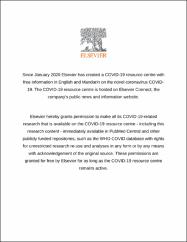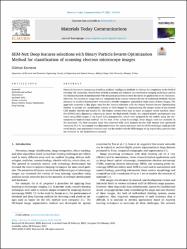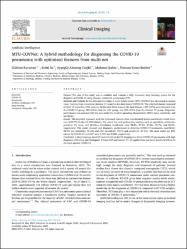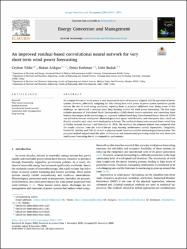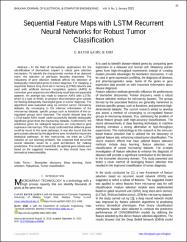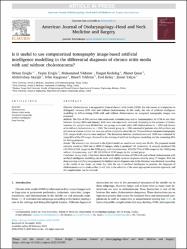Ara
Toplam kayıt 21, listelenen: 1-10
COVIDiagnosis-Net: Deep Bayes-SqueezeNet based diagnosis of the coronavirus disease 2019 (COVID-19) from X-ray images
(Elsevier, 2020)
The Coronavirus Disease 2019 (COVID-19) outbreak has a tremendous impact on global health and the daily life of people still living in more than two hundred countries. The crucial action to gain the force in the fight of ...
SEM-Net: Deep features selections with Binary Particle Swarm Optimization Method for classification of scanning electron microscope images
(Elsevier, 2021)
Materials Science is increasingly handling artificial intelligence methods to address the complexity in the field of everyday life necessities. Researchers in both academia and industry are interested in imaging techniques ...
Diagnosis and grading of vesicoureteral reflux on voiding cystourethrography images in children using a deep hybrid model
(Elsevier, 2021)
Background and objective
Vesicoureteral reflux is the leakage of urine from the bladder into the ureter. As a result, urinary tract infections and kidney scarring can occur in children. Voiding cystourethrography is the ...
Comparison of extreme learning machine and deep learning model in the estimation of the fresh properties of hybrid fiber-reinforced SCC
(Springer, 2021)
This paper studied the estimation of fresh properties of hybrid fiber-reinforced self-compacting concrete (HR-SCC) mixtures with different types and combinations of fibers by using two different prediction method named as ...
MTU-COVNet: A hybrid methodology for diagnosing the COVID-19 pneumonia with optimized features from multi-net
(Elsevier, 2022)
COVID-19PneumoniaArtificial intelligence (AI)Deep learningComputed tomography (CT)
Classification of thermoluminescence features of CaCO3 with long short-term memory model
(Wiley, 2021)
Calcium carbonate (CaCO3 ), a mineral commonly found in the Earth's crust, is mainly in the forms of calcite and aragonite. Calcite has the most stable type of thermodynamics at room temperature and ambient pressure. It ...
Prediction of software vulnerability based deep symbiotic genetic algorithms: Phenotyping of dominant-features
(2021)
The detection of software vulnerabilities is considered a vital problem in the software security area for a long time. Nowadays, it is challenging to manage software security due to its increased complexity and diversity. ...
An improved residual-based convolutional neural network for very short-term wind power forecasting
(ELSEVIER, 2021)
An accurate forecast of wind power is very important in terms of economic dispatch and the operation of power systems. However, effectively mitigating the risks arising from wind power in power system operations greatly ...
Sequential Feature Maps with LSTM Recurrent Neural Networks for Robust Tumor Classification
(2021)
In the field of biomedicine, applications for the identification of biomarkers require a robust gene selection
mechanism. To identify the characteristic marker of an observed event, the selection of attributes becomes ...
Is it useful to use computerized tomography image-based artificial intelligence modelling in the differential diagnosis of chronic otitis media with and without cholesteatoma?
(Elsevier B.V. All, 2022)
Cholesteatoma is an aggressive form of chronic otitis media (COM). For this reason, it is important to distinguish between COM with and without cholesteatoma. In this study, the role of artificial intelligence modelling ...

